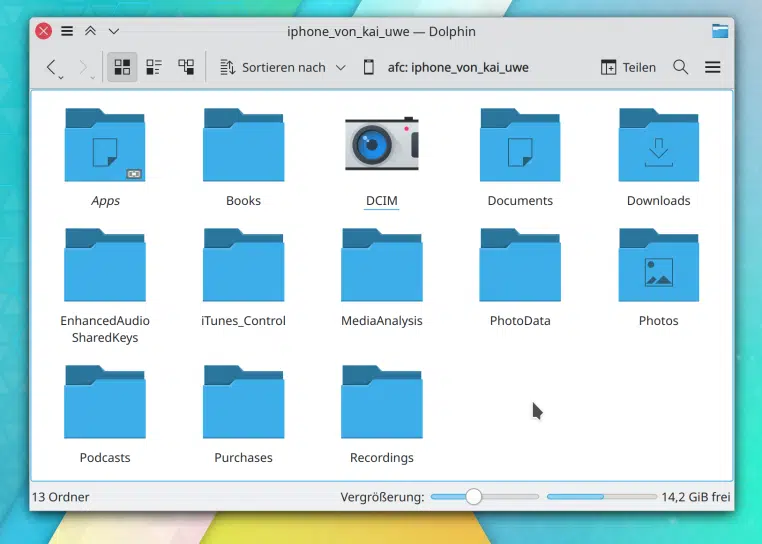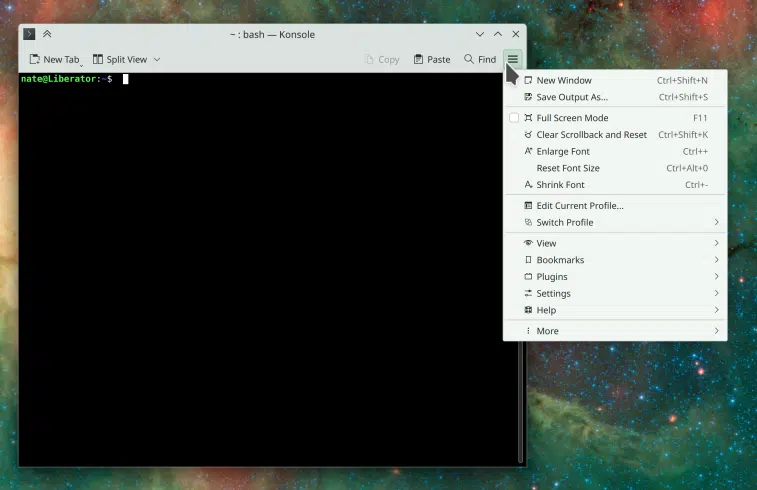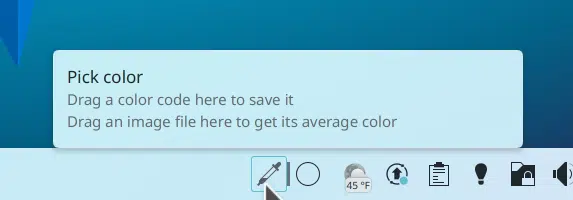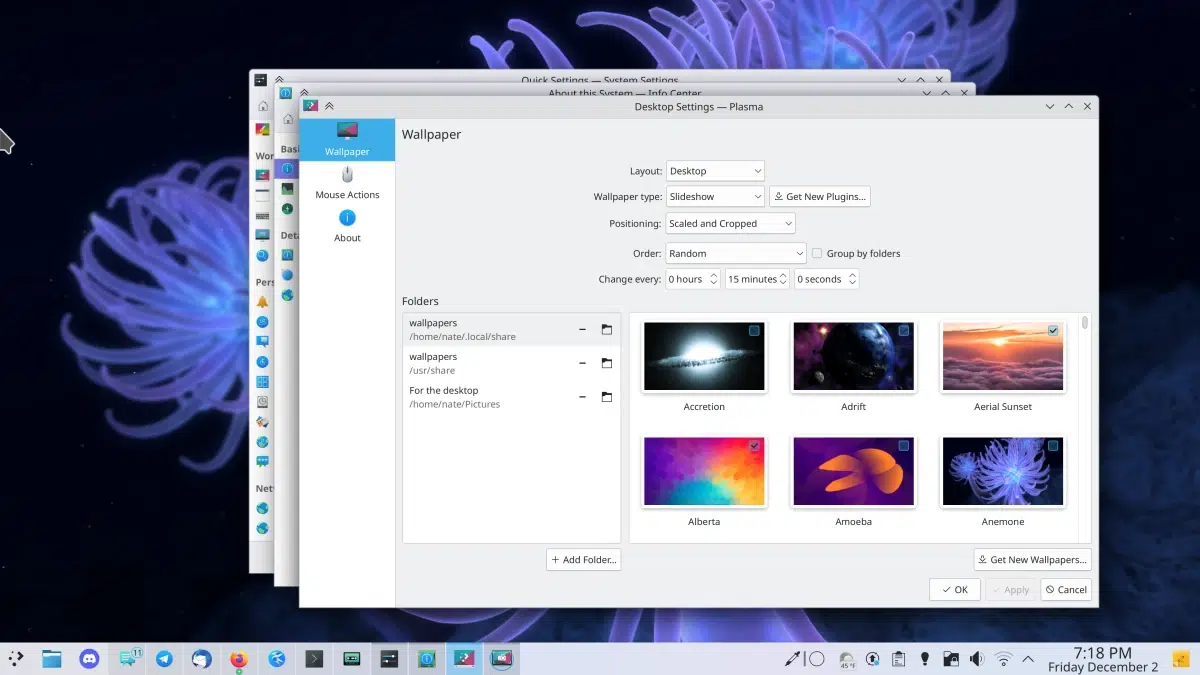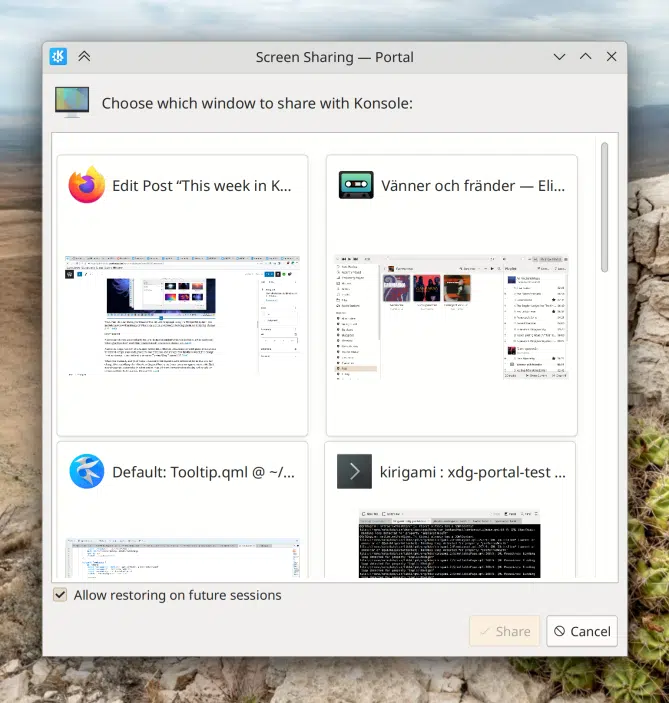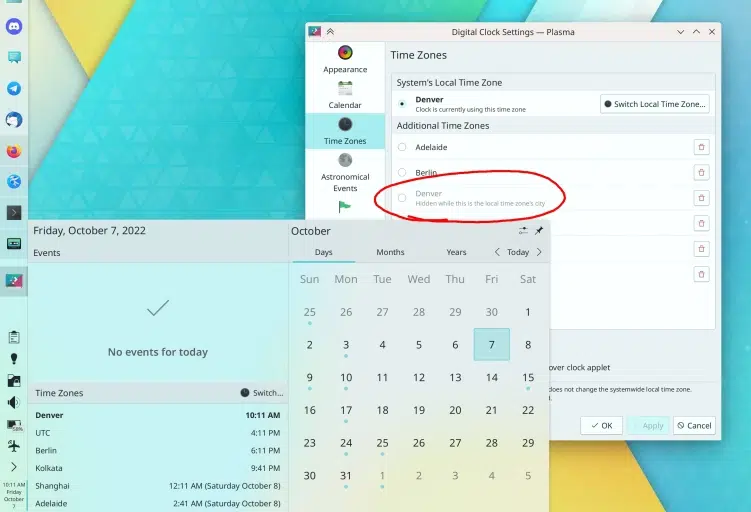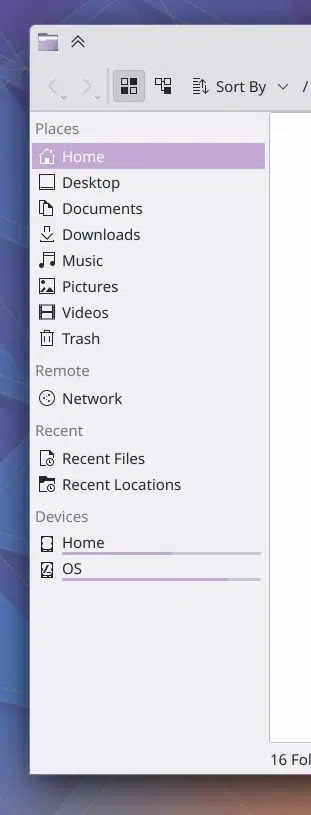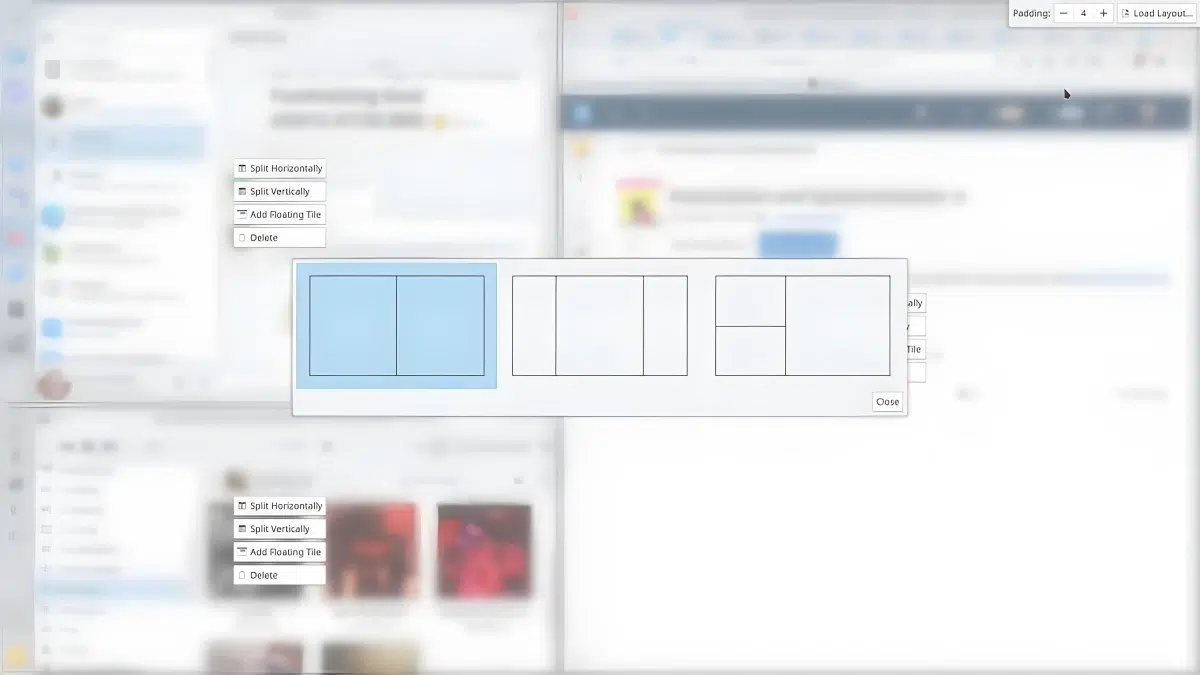
KDE has heard my prayers. Probably. I am someone who looks a lot at the performance of desktops to choose one or the other. I like the design/layout of GNOME, but I prefer the lightness of Plasma and the options that apps offer. KDE. I was using i3 for a while, but it crashed several times and I went back to a "normal" desktop. Now the K project is cooking something up, and while it says it won't compete with window managers, there are doubts about it.
I think it was in Pop! _OS 21.04 when System76's operating system introduced its kind of window manager. When activated, what's in front of us isn't much different than what we see when using the i3 or Sway. In Windows 11, something that is referred to as Snap was introduced, which is a way of arranging windows by dividing the screen. Of the three options, namely window managers, the Pop!_OS thing, and the Windows 11 thing, KDE is working on something, and it's impossible to know what it will end up with. It is the highlight of the news that they have presented today.
New Features Coming to KDE
Since I don't want to get too excited about this kind of stacker or non-window manager, I have to limit myself to what Nate Graham has posted, who says:
KWin has received a very cool new feature this week (header image): an advanced built-in tile system that allows you to set custom tile layouts and resize multiple adjacent windows at once by dragging the gaps between them. This feature is still in its infancy and is not designed to fully replicate the workflow of a tiled window manager. But we expect it to grow and advance over time, and also the new APIs added for it should benefit third party tiling scripts that want to turn KWin into a tiling window manager (Marco Martin, Plasma 5.27).
- Apple iOS devices can now be browsed using their native afc:// protocol in Dolphin, file dialogs and other file management tools (Kai Uwe Broulik, kio-extras 23.04):
- Konsole now uses the KHamburguerMenu (Andrey Butirsky, Konsole 23.04):
- By default, Konsole's tab bar is now towards the top of the window like in most other applications, instead of at the bottom (Nate Graham, Konsole 23.04).
- You can now drag an image into the Color Picker widget to have it calculate the average color of that image and save it to the list of stored colors (Fushan Wen, Plasma 5.27):
- When a KRunner search finds nothing, it will now give you the opportunity to do a web search for the search term (Alexander Lohnau, Plasma 5.27).
- Support for the Global Shortcuts portal has been achieved, allowing Flatpak and other stand-alone applications that use the portal system to offer a standardized user interface for setting and editing global shortcuts (Aleix Pol González, Plasma 5.27).
Improvements in the user's interface
- When the current folder is deleted in Dolphin, it now automatically navigates to the parent folder (Vova Kulik and Méven Car, Dolphin 23.04).
- Speaking of the context menu that contains that action, the first time you right-click an app in Kickoff to show it, the menu now appears immediately instead of delaying a few seconds (David Redondo, Plasma 5.27).
- The "cascading" window placement mode has been removed from KWin, as all other window placement modes where it makes sense now include the cascading behavior itself (Natalie Clarius, Plasma 5.27):
- The screen selector dialog to be seen for Flatpak and Snap apps using the XDG portal system now includes preview thumbnails for each shareable screen or window (Aleix Pol González, Plasma 5.27):
- Plasma panels now automatically become thicker when switching to a Plasma theme whose graphics don't work on thin panels (Niccolò Venerandi, Plasma 5.27).
- Plasma no longer weirdly remembers different thicknesses for each panel in horizontal and vertical configurations; now each panel has a thickness and maintains it when changing from horizontal to vertical and vice versa (Fushan Wen, Plasma 5.27).
- When you manually add your home time zone to the digital clock's time zone list so you can change it to another when you're traveling and automatically display your home time zone, it now automatically disappears when you're in your home time zone when showing it would be redundant (Nate Graham, Plasma 5.27):
- The Battery and Brightness widget now considers a battery that has been charged to its configured charge limit to be fully charged (Nate Graham, Plasma 5.27).
- The questionable utility of the "Search" section in the Places panel has been removed by default to avoid presenting so much visual clutter by default. The functionality is still available and you can add these elements back if you want and use them of course (Nate Graham, Frameworks 5.101):
Correction of minor bugs
- Scrolling in the language list sheet on the Region & Language page of System Preferences is no longer almost unusually choppy (Nate Graham, Plasma 5.26.5).
- When the 5.27rd party lock screen theme is broken but the kscreenlocker_greet background process hasn't crashed, you'll see the fallback lock screen again instead of the dreaded “your lock screen is broken” screen (David Round, Plasma XNUMX).
- The Weather widget no longer escapes its space in the System Tray and overlaps other icons in various icon and panel sizes (Ismael Asensio, Plasma 5.27).
- When night color is active and system or KWin is rebooted, it now turns back on as expected (Vlad Zahorodnii, Plasma 5.27).
- Notifications can now be read using a screen reader (Fushan Wen, Plasma 5.27).
- A number of performance works have been done to speed up the drawing process of UI elements in Plasma and QtQuick-based applications, which should result in faster speed and lower power consumption (Arjen Hiemstra , Frameworks 5.101).
- In the Plasma Wayland session, when a window containing QtQuick-based UI elements is dragged onto another screen that uses a different scaling factor, the window instantly adjusts to display correctly based on that screen's scaling factor, No blurriness or pixelation. It even works when a window is partially on one screen and partially on another. (David Edmundson, Frameworks 5.101).
This list is a summary of the fixed bugs. The complete lists of bugs are on the pages of 15 minute bug, very high priority bugs and overall list. This week a total of 166 bugs have been fixed.
When will this all come to KDE?
Plasma 5.26.5 will arrive on Tuesday, January 3 and Frameworks 5.101 will be available later today. Plasma 5.27 will arrive on February 14, and KDE Applications 22.12 will be available on December 8; from 23.04 it is only known that they will arrive in April 2023..
To enjoy all this as soon as possible we have to add the repository backports of KDE, use an operating system with special repositories like Kde neon or any distribution whose development model is Rolling Release.
Images and content: pointieststick.com.
